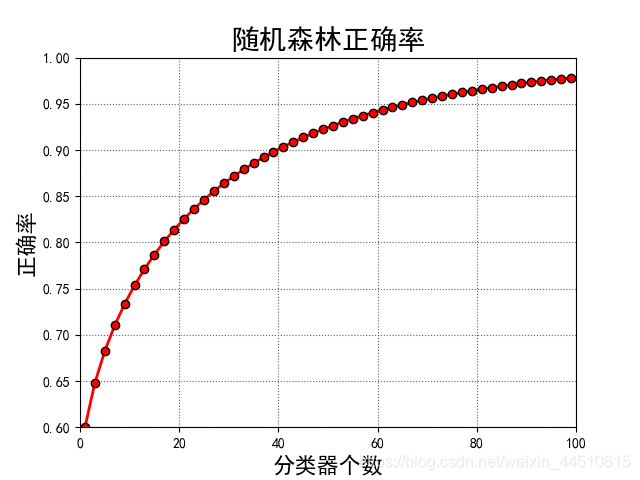#!/usr/bin/python
# -*- coding:utf-8 -*-
import operator
import numpy as np
import matplotlib.pyplot as plt
import matplotlib as mpl
from functools import reduce
from scipy.special import comb
print('comb(10, 2) = ', comb(100, 30))
def c(n, k):
return reduce(operator.mul, list(range(n-k+1, n+1))) / reduce(operator.mul, list(range(1, k+1)))
def bagging(n, p):
s = 0
for i in range(n // 2 + 1, n + 1):
s += comb(n, i) * p ** i * (1 - p) ** (n - i)
return s
if __name__ == "__main__":
n = 100
x = np.arange(1, n, 2)
y = np.empty_like(x, dtype=np.float)
for i, t in enumerate(x):
y[i] = bagging(t, 0.6)
if t % 10 == 9:
print(t, '个分类器的正确率:', y[i])
mpl.rcParams['font.sans-serif'] = 'simHei'
mpl.rcParams['axes.unicode_minus'] = False
plt.figure(facecolor='w')
plt.plot(x, y, 'ro-', lw=2, mec='k')
plt.xlim(0, n)
plt.ylim(0.6, 1)
plt.xlabel('分类器个数', fontsize=16)
plt.ylabel('正确率', fontsize=16)
plt.title('随机森林正确率', fontsize=20)
plt.grid(b=True, ls=':', color='#606060')
plt.show()

